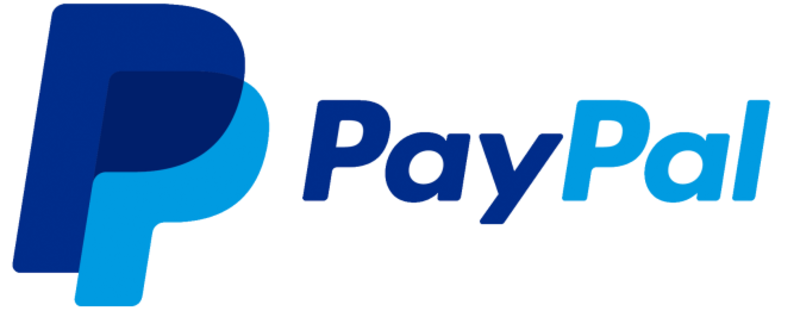WORDPRESS
7 Best Payment Gateways of 2023

Payment gateways are services that enable businesses to accept online payments. They act as intermediaries between the customer and the business, facilitating payments and protecting merchants and customers from fraud. Secure payment gateways are essential to the success of any business today.
Read on to learn more about our picks for the best payment gateways, how they work and how you can choose the one that’s right for your business.
Our Top Picks for the Best Payment Gateways
Best Payment Gateways Review
- Setup is fast and easy
- 24/7 email and phone support
- Wide variety of integrations
- Pricing details are confusing and opaque
- Not as cheap as other payment gateways
Why we chose it: Clover is one of the best payment gateways for small, brick-and-mortar businesses as it’s easy for non-technical people to use.
Clover’s features include reporting tools to track revenue, get aggregated sales across all your business locations, track total sales per employee, view end-of-day reports and analyze your busiest times. It also offers a rapid deposit option, which lets you access funds from your sales transactions within minutes (though this costs a 1% fee). Clover allows you to create physical and digital gift cards and accept payments via Apple Pay, Google Pay, Venmo and PayPal.
Clover’s pricing has four components: the upfront cost, monthly fees for hardware, transaction processing fees and a monthly fee to use Clover’s point-of-sale (POS) system. Clover combines these factors into three pricing tiers: Starter, Standard and Advanced.
These three tiers are set up differently for full-service dining restaurants, quick-service dining restaurants, retail stores, personal services, professional services and home and field services. On top of that, there are third-party sellers of Clover merchant services.
This is why Clover’s pricing is difficult to figure out. However, some business owners will appreciate the customization that Clover offers for different business types, as a spa will have different payment-related needs than an accountant, for example.
Clover offers over 300 integrations, including payroll software, meal delivery platforms, e-commerce platforms, accounting software and more. However, Clover doesn’t integrate with popular customer relationship management (CRM) providers like Zoho and Salesforce. It offers its own CRM features, but they may not be as comprehensive as dedicated CRM providers.
Clover has generally positive online reviews, with some mentions praising the system’s set up process and ease-of-use for in-person and cash sales. Frequent complaints include the number of fees Clover charges, poor customer service with no chat logs provided to customers and the company holding funds for lengthy periods.
- No monthly fee
- Transparent pricing with easy-to-understand fees
- Funds available within two business days
- Expensive for small or low-volume businesses
- No chat support
- Limited number of integrations compared to other payment gateways
Why we chose it: Like all payment gateways, Helcim has transaction fees, but unlike others, it doesn’t have a monthly fee. It also offers a unique bundle of features, such as a merchant account, a point-of-sale system, hosted payment pages, credit card processing and invoicing.
Helcim’s features include secure storage of customer and card information, inventory management and online payments. You’ll also get a virtual terminal to take credit card payments over the phone, online payment pages, and the ability to set up subscription plans and customized invoices.
Helcim’s point-of-sale software is included. The company’s card reader comes with a flat fee and no monthly fee, making it cheaper than other payment gateways.
Many businesses want to integrate payment gateways with their existing software, but Helcim offers far fewer integrations than other payment gateways. The company has built-in features like CRM, point-of-sale (POS) and e-commerce tools, but these may be limited for businesses that have more advanced or complex analytical needs. It does, however, integrate with QuickBooks and other e-commerce platforms.
Helcim has overall positive scores on several product review websites. Positive reviews frequently mention Helcim’s knowledgeable customer service team and being able to talk to a “real person.” A few negative reviews state that Helcim’s system can be clunky and slow.
- Recognizable name
- Easy to use
- Hundreds of integrations
- High fees, including high chargeback fee
- Not for high-volume businesses
- No offline payment processing
Why we chose it: PayPal is one of the best payment gateways for e-commerce because it’s easy to add to your website and, due to its name recognition, customers tend to trust it. In addition to its online features, PayPal can also be used to accept payments in person, including major credit cards and Venmo.
PayPal’s features include the ability to set up subscription plans, discounted transaction fees for nonprofits and payment processing in 200 countries and 100 currencies. It has no monthly fee, but its per-transaction fees are much higher than other payment gateways.
PayPal offers many integrations, including with Constant Contact, WooCommerce, Shopify, QuickBooks and Soho. However, its branding customization is more limited than other payment gateways — you can add your logo, but there’s not much else in terms of customization options. Therefore, the payment page will look like PayPal, not like your company’s.
Since Paypal is such a large company with several different business operations, online reviews vary. Positive reviews mention that PayPal is fast and easy to use, while complaints include poor customer service and high fees.
- No monthly fee or setup fee
- 24/7 phone support
- Extensive knowledge base available on its site
- Must give two months’ written notice to terminate contract
- Minimum sales volume of $120
- Not as easy to use for people without a technical background
- No chat support
Why we chose it: Adyen’s features include payment processing for 30 currencies and multiple countries, making it a good choice for merchants who process international transactions.
Ayden offers the ability to create virtual and physical gift cards and allows merchants to add a donation option at checkout so that customers can support specific causes. Its platform also offers analytical insights such as the effectiveness of each payment method, which customers spend the most and your loyalty program’s performance.
Adyen offers over 100 integrations with third-parties such as BigCommerce, WooCommerce, Salesforce and Magento. However, it doesn’t have integrations for QuickBooks or Intuit, two of the most widespread accounting software programs.
Adyen has limited options for you to customize your checkout form. Thus, if you want a payment page that fits your branding, you’ll need technical knowledge — something that many small business owners may not have.
As for online reviews, many positive comments focus on Adyen’s support of payment processing around the world. Frequent complaints involve the platform being hard to use, with a complicated interface, difficulty getting credit card payments on business sites and poor technical support.
- Customization tool lets you create branded invoices
- Flat monthly fee is cost effective for high-volume businesses
- Highly praised customer support
- Not a good option for businesses doing under $5,000 in transactions per month
- U.S.-based businesses only
Why we chose it: Stax’s comprehensive customization tools make tailor-made branding easier than other payment gateways. Stax’s custom branding lets you tailor invoices, receipts and website payments to your brand.
Stax also has many integrations, including popular business software programs like QuickBooks, Xero, Hubspot, MS Teams, Zoho, Slack, Calendly and Google Docs.
Unlike most other payment gateways, Stax charges a flat monthly fee instead of a percentage of each transaction (however, there are still flat per-transaction fees).
With Stax, you’ll get same-day access to your funds. You can also set up digital gift cards, schedule future and recurring payments, create payment links that you can send via email or text and take payments over the phone.
Looking at several different review websites, Stax is one of the highest-rated payment gateways in the industry. Positive reviews frequently mention Stax’s excellent customer service while negative reviews — although sparse — cited confusion over Stax’s pricing model.
- 24/7 phone and chat support
- Offers many integrations
- Excellent anti-fraud and security tools available
- Requires more programming knowledge than other payment gateways
- Excludes “high-risk businesses,” which is open to Stripe’s interpretation
- Takes 7 to 14 days to receive your first payout
Why we chose it: Stripe’s more than 660 integrations make it an extremely flexible payment gateway for businesses of all sizes, from startups to large corporations. Its software development kits and application programming interfaces make it highly programmable for businesses that want to incorporate Stripe into their mobile app or software.
Stripe’s features include low-cost, automated clearing house processing, the ability to process online payments in over 135 currencies, a customizable checkout process and fraud-detection and risk-management tools. This flexibility extends to its month-to-month contract terms, so you’re not locked into a lengthy contract. Stripe’s fees are comparable to other payment gateway providers.
Online reviews overwhelmingly praise Stripe’s customer service. It offers 24/7 chat, phone and email support, extensive API documentation and detailed FAQs. Stripe also provides three levels of additional support as add-ons, including a dedicated team for your account so you always talk to the same specialists, prioritized ticket routing for faster support and high-volume event management for peak transaction days.
Stripe offers a high degree of customization, including the ability to adapt your checkout process to your company’s branding and include information about your return and refund policies. Business owners can also customize invoice PDFs, hosted invoices and email receipts. Stripe’s numerous integrations allow you to build a customized ecosystem of integrated tools, from CRM platforms to POS systems, accounting software and more.
- Transparent, simple pricing
- Easy-to-use payment portal
- Extensive features
- Limited payment processing for non-U.S. countries
- Can’t use on Windows desktop or tablet
Why we chose it: Square was one of the first payment gateways and has become known for its ease of use. Square has a massive user base and market share, making it a stable, trustworthy provider.
Square’s simple-to-use tools allow business owners to create a professional online presence without any programming or specialized tech skills. You can build a site for free using Square as the host (although a custom domain name has an extra fee), or take Square payments on sites created using other online store builders.
Square has one basic plan with no monthly fee, as well as several more complex plans with monthly fees. Every plan comes with live phone support and dispute management. Square’s standard POS software, which is available as a mobile app, is free if you use it on a device you own. You can also sign up for a monthly POS plan with more advanced features, such as getting alerts when inventory is running low.
Square offers a wide array of features for varying extra monthly fees. The features include payroll, invoices, email marketing, text message marketing, setting up an online store, POS selling, physical and digital gift cards, team scheduling and a loyalty rewards program. You can also create a Square checking account with no fees, no minimum balance and no credit check required.
Square’s website-building options include custom colors and fonts, but that’s about it. You also can’t alter the code in a Square website, so you can’t bring a developer in to spruce it up. There is customization for checkout, receipts and invoices but you can’t include your business address in an invoice.
Square offers many integrations, including QuickBooks, Groupon, Mailchimp and many others. It doesn’t, however, integrate with the most popular CRMs. Instead, Square offers its own CRM features like Customer Directory, Square Loyalty and Square Marketing.
Square’s online positive reviews praise its ease of use and robust business analytics. Complaints include poor customer service and the company putting money on hold for suspected fraud with little justification.
Other payment gateways we considered
Vagaro
- Easy to set up and use
- Can keep useful customer records, including videos, photos, PDFs and customer service preferences
- No free plan
- Hardware is much more expensive than other payment gateways’ devices
- Limited availability
Vagaro is a POS system that is easy to set up and offers solid booking, payroll, scheduling, marketing and HR tools. However, it didn’t make our list because it’s only available to beauty, wellness and fitness professionals.
Chase Payment Solutions
- Cheaper-than-average flat-rate prices
- Funds available on the next business day (if you have a Chase checking account)
- Chase lets third parties resell its service, which can result in a markup
- Not ideal for high-volume businesses with over $5 million in sales
Chase Payment Solutions offers a wide variety of features, including mobile payments with its mobile checkout app, credit card terminals, the ability to apply for a business line of credit and developer tools. However, it didn’t make our list because its standout feature — next-day access to funds — requires you to have a Chase checking account.
Payment Gateways Guide
What is a payment gateway?
Payment gateways are tools that merchants use to take payments from customers. While there is a lot of overlap, the best payment gateways aren’t necessarily the same as the best credit card processing companies because credit card processors execute the financial transaction, while payment gateways are web-based mediators to financial transactions.
An online payment gateway, which is cloud-based, allows merchants to receive online payments from their customers. A brick-and-mortar store’s payment gateway is a POS system or a card reader. For example, if you book a flight online through a website, that website will offer you several payment options. That website uses a payment gateway service that allows you to pay using the options it gives you (e.g., PayPal, credit card).
How do payment gateways work?
Before looking at how payment gateways work, it’s helpful to understand the key stakeholders involved in a payment-gateway transaction:
- Merchant: The person or business that makes the sale
- Cardholder: The customer purchasing the good or service
- Issuing bank: The financial institution that holds the customer’s account. This could be a credit card account or a checking account linked to a debit card.
- Acquiring bank: The financial institution that holds the merchant’s account
- Card schemes: Payment networks that manage payment transactions, such as Visa, Mastercard or American Express
A payment gateway connects all of these stakeholders in the payment process.
- The cardholder initiates a purchase, such as clicking a “buy now” button on a business’s website.
- The payment gateway checks with the issuing bank to ensure that there are sufficient funds in the customer’s account or the transaction doesn’t exceed their credit limit.
- The payment gateway sends encrypted card information to the card schemes so they can process the transaction.
- The card schemes approve the transaction, and the payment gateway sends the information back to the merchant to finish the transaction.
- The payment gateway sends the information to the acquiring bank so the money can move from the issuing bank to the merchant’s account.
How to pick a payment gateway
When doing a comparison of payment gateways to find the best one for your business, you may want to ask yourself the following questions:
- Is the payment gateway available in both your country and your customers’ countries?
- Which payment methods does it accept, and are these the ones your customers use?
- Does it offer an in-person point-of-sale (POS) system, if you need one?
- Does it easily integrate with your existing software systems?
- How much will it cost, given any add-ons your company will need and your sales volume?
When you’re looking for the best online payment gateways, it’s best to consider your specific needs. For example, the best payment gateways for a small business will vary based on factors like monthly sales volume and what your business sells.
Below are some of the key considerations you should make when choosing a payment gateway.
Look at how much you spend per month
When looking at a payment gateway, consider how much you’ll have to spend per month under its pricing scheme. Some payment processing gateways are most cost-effective for businesses that reach a certain threshold in their number of monthly transactions or their total monthly amount sold. Others have more favorable pricing for small businesses or startups.
Understand your target shopper’s spending habits
Understand how your target shopper typically pays. Depending on the payment gateway you choose, you might not offer the type of payment that a substantial portion of your clients use. For example, some of your customers might not use credit card payments and may prefer to make purchases via cryptocurrency or Venmo.
Make sure you pick the payment gateway that offers all the forms of payment your customers could use.
Determine where you’re selling most frequently
Are you selling most frequently online or in person? Do you need a system that can accept offline payments for times when you don’t have Wi-Fi? If you’re a brick-and-mortar business, you’ll want to make sure you consider only payment gateways that offer the best point-of-sale systems on the market.
Payment Gateway FAQ
Which payment gateways work with Payoneer?
Payoneer integrates with ecommerce platforms like Shoplazza, Ueeshop, WooCommerce, Magento and Shopline. You can also use it to transfer funds from certain payment gateways including Stripe and PayPal. However, Payoneer isn’t necessarily a payment gateway option because it doesn’t take a credit card number and doesn’t charge a purchase immediately. It’s more suitable for freelancers and sole proprietors who need to invoice clients for later payment.
Which payment gateways have OFAC restrictions?
So if you’re a U.S. person, you won’t be able to find a payment gateway that doesn’t have OFAC restrictions — and even if you could, it would inherently be an untrustworthy service as it would be facilitating illegal activity.
If you’re not a U.S. person and need options for high-risk payment gateways (i.e., payment gateways that allow you to do business with people in U.S.-sanctioned countries), consider PaymentCloud, which specializes in high-risk businesses. Keep in mind that many payment gateways have payment prohibitions on OFAC countries, regardless of whether you’re a U.S. person.
How much do payment gateways charge?
Some payment gateways charge interchange fees plus a percentage of the transaction and a per-transaction fee. Interchange fees are transaction fees that the merchant’s bank has to pay when a customer uses a credit or debit card. The fees go to the card issuer bank to cover its costs. Payment gateways do not set interchange fees, which can vary over time.
How We Chose the Best Payment Gateways
As part of our methodology for creating this list of the best payment gateways, we looked at:
- Customer satisfaction reported on various review sites
- Ease of use for people without technical or programming skills
- Transparent, easy-to-understand pricing
- Variety of integrations with other business software on offer
- Ability to customize the customer experience to your business’ branding




















